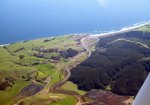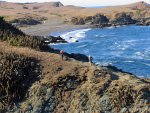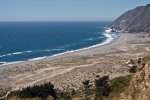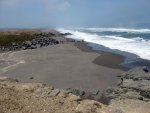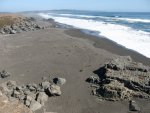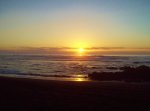biotect
Designer
.
CONTINUED FROM PREVIOUS POST
****************************************
9. Beach-Glamping with Larger Expedition Motorhomes
****************************************
The only problem is that even a 6x6 Landrover like Nyathi is still a comparatively small vehicle. The vehicles pictured above are sand-capable, to be sure, and perhaps the Earthroamer campers shown in the first row have CTIS, a Central Tire Inflastion System? What one wants is a TerraLiner-sized expedition motorhome that can do at least this much: that can deflate tires with CTIS, and drive right onto a large beach if necessary, especially if that seems like a good place to glamp.
Oddly enough, on the Internet there are not that many photos and videos of larger, expedition-type vehicles “surf glamping” or “beach camping”.
To be sure, there's Casa Azul – see http://www.overlandhardware.com/oh_products.html , http://www.overlandhardware.com/oh_coolstuff_5_07.html , http://www.overlandhardware.com/ca-specs.html , http://www.overlandhardware.com/ca-image.html , http://www.overlandhardware.com/baja-image.html ,http://www.4wdtrips.net/forum/showthread.php?6080-BIG-TRUCKS-Casa-Azul , http://www.ford-trucks.com/forums/975667-casa-azul.html , http://www.truckconversion.net/forums/f97/casa-azul-2014-pre-baja-modifications-7274/ , post #184 at http://www.expeditionportal.com/for...pedition-RV-w-Rigid-Torsion-Free-Frame/page19 , and post #1227 at http://www.expeditionportal.com/for...edition-RV-w-Rigid-Torsion-Free-Frame/page123 :






****************************************
CONTINUED IN NEXT POST
.
CONTINUED FROM PREVIOUS POST
****************************************
9. Beach-Glamping with Larger Expedition Motorhomes
****************************************
The only problem is that even a 6x6 Landrover like Nyathi is still a comparatively small vehicle. The vehicles pictured above are sand-capable, to be sure, and perhaps the Earthroamer campers shown in the first row have CTIS, a Central Tire Inflastion System? What one wants is a TerraLiner-sized expedition motorhome that can do at least this much: that can deflate tires with CTIS, and drive right onto a large beach if necessary, especially if that seems like a good place to glamp.
Oddly enough, on the Internet there are not that many photos and videos of larger, expedition-type vehicles “surf glamping” or “beach camping”.
To be sure, there's Casa Azul – see http://www.overlandhardware.com/oh_products.html , http://www.overlandhardware.com/oh_coolstuff_5_07.html , http://www.overlandhardware.com/ca-specs.html , http://www.overlandhardware.com/ca-image.html , http://www.overlandhardware.com/baja-image.html ,http://www.4wdtrips.net/forum/showthread.php?6080-BIG-TRUCKS-Casa-Azul , http://www.ford-trucks.com/forums/975667-casa-azul.html , http://www.truckconversion.net/forums/f97/casa-azul-2014-pre-baja-modifications-7274/ , post #184 at http://www.expeditionportal.com/for...pedition-RV-w-Rigid-Torsion-Free-Frame/page19 , and post #1227 at http://www.expeditionportal.com/for...edition-RV-w-Rigid-Torsion-Free-Frame/page123 :






****************************************
CONTINUED IN NEXT POST
.
Last edited:
























































